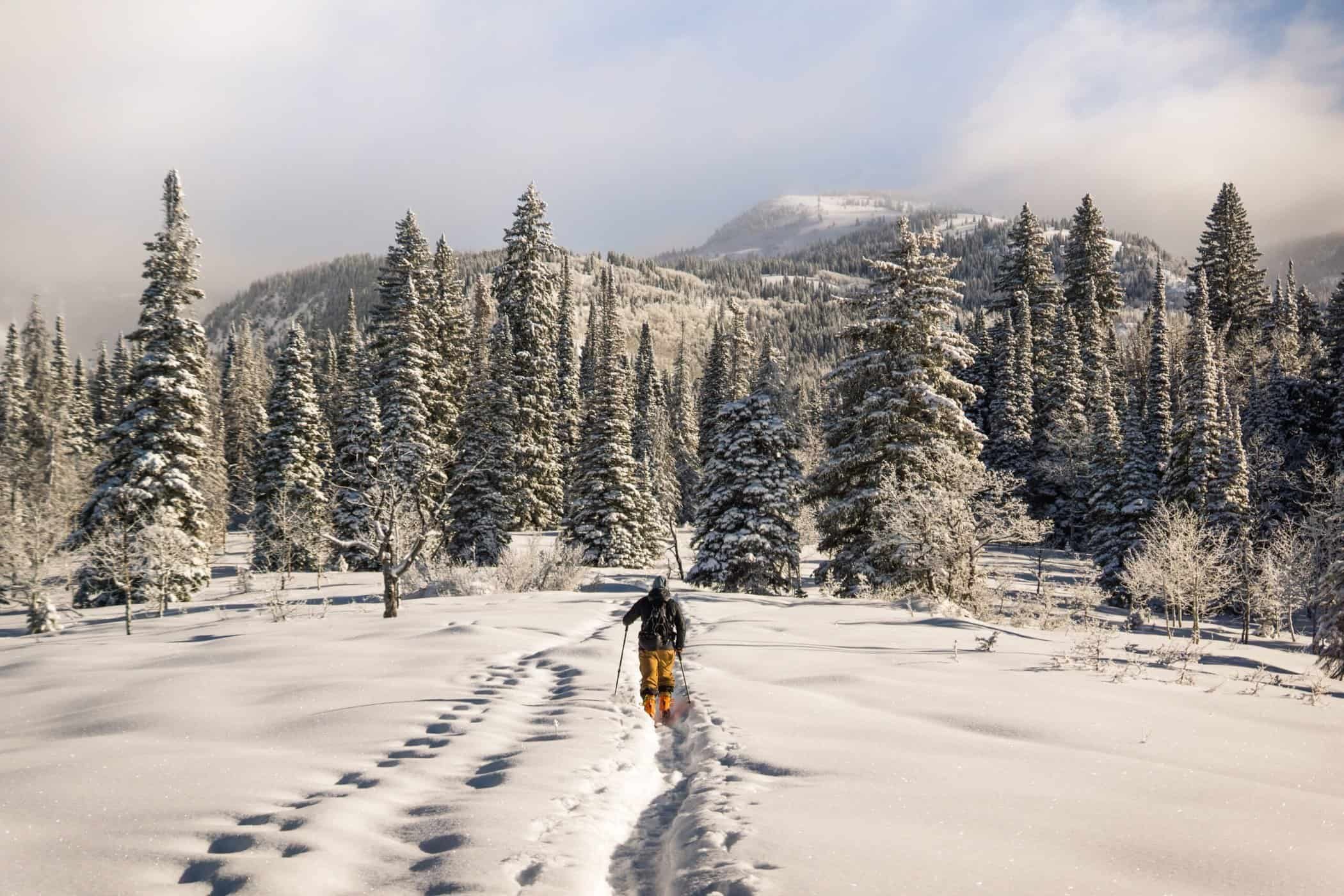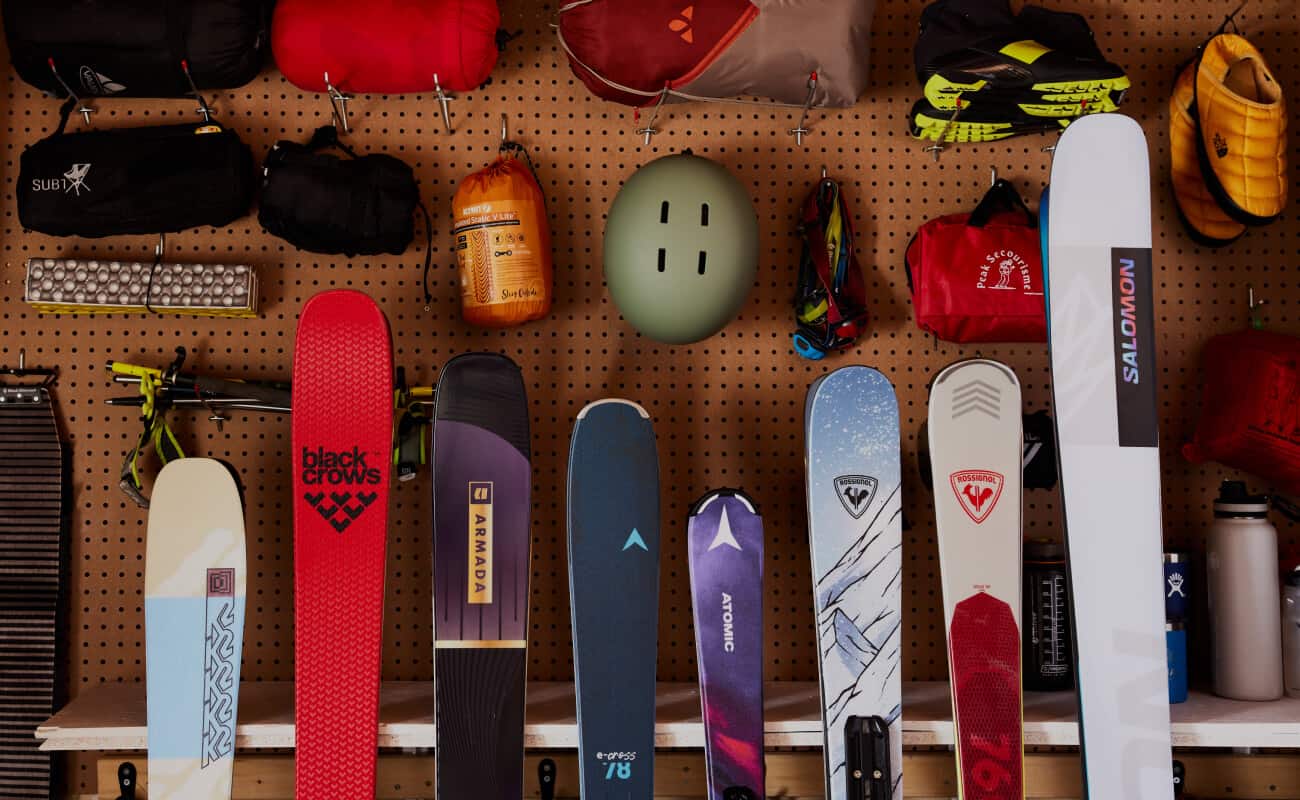Shopping for ski and snowboard socks seems easy enough but when you throw in the fact that you’ll be wearing your ski or snowboard boot all day, finding the right pair becomes essential. Comfort and quality are key, so don’t settle for anything less because excellent riding conditions can easily be spoiled if your feet are in agony.
- What kind of sock should you get?
- What does the weight of the sock mean?
- How to pick the right size sock.
- Different ski & Snowboard sock materials
- Additional ski & snowboard sock features
Ski or Snowboard Socks?
First thing’s first, are you a skier or a boarder? Ski and snowboard boots have substantial differences, requiring certain features from a sock. Ski socks tend to have more padding on the shin to enhance comfort and eliminate the shin bang from the front of the ski boots. On the other hand, snowboard socks are designed with an integrated forward lean to eliminate bunching in critical areas while riding.
#
Tube Socks VS Ergonomic Socks
Tube socks are the most common ski and snowboard socks you will encounter. This style is very basic and simply resembles a tube with a toe cap sewn at one end. There are no additional technical features and generally no designated left or right sock.
On the other hand, ergonomic socks are more technical and designed for comfort. They will be ergonomically shaped to provide maximum comfort and performance and will have a designated left and right sock. An ergonomic sock will also include more features such as an angled toe box and smaller size increments which allow for more accurate sizing. If you’re looking to have an enjoyable day on the mountain, choosing an ergonomic sock for skiing and snowboarding is a wise choice because they will provide a more comfortable fit and superior anatomical manoeuvrability.
#
What is Sock Weight?
Many ski and snowboard socks are available in different weights, which relate to the warmth of the sock. The heavier the sock, the more warmth it will provide, whereas a lighter sock is thinner with less thermal capacity and is ideal to wear in warmer temperatures, or for snugger fitting boots. Although midweight socks are the most common, some skiers or snowboarders will choose to wear lightweight socks to avoid sweaty feet. If you find you get hot feet, stick to thinner, lighter socks. Otherwise, a midweight sock should be a sufficient choice for most days on the mountain.
| Lightweight Socks | Midweight Socks | Heavyweight Socks |
|
|
|
#
Choosing the Right Sock Size
A crucial element of finding a ski or snowboard sock is choosing one that fits comfortably. Most socks will be gender-specific to accommodate higher arches, taller calves, and wider feet, so it is important that you find a sock that fits these features of your foot.
When it comes to the fit, you want a sock that is snug and comfortably hugs your foot. Any pressure points, wrinkles, or folds can lead to blisters or pressure points, which can put a damper on your day.
When you’re searching for your right sock, start with your everyday shoe size and go from there. The more technical socks will have more focused sizes so that you can find the perfect fit. If you’re in-between sizes, going up a size will give you a more relaxed fit and going down a size will be more snug. We’d usually recommend sizing down instead of choosing a sock that is too big.
Avoid Socks that are Too-Tight or Too-Loose
Most socks are made of stretchy materials which increase mobility and comfort while you’re wearing your ski or snowboard boots. A sock that is too tight can lead to a loss of circulation or merely unpleasantly rubbing against your foot. On the other hand, a sock that is too large is prone to wrinkling and folding, which leads to pressure points and blisters.
Don’t Ignore the Toe Fit
When trying on a ski or snowboard sock, the most important part of the fit to consider is the toe-box. There should be zero excess material around your toes, and you should not feel the sock pressuring your toes in any way.
#
What are the Right Sock Materials?
Like other gear, particular sock materials have their advantages and disadvantages. When it comes to ski and snowboard socks, there are a variety of materials to choose from, and every person may have different preferences.
Synthetic Ski Socks
Synthetic socks include socks made of materials like nylon, polyester, acrylic and more. Often, you will find a sock that is made from a mix of one or more of these materials, to create a product that holds its shape and provides moisture wicking properties. The most popular synthetic materials that make up ski and snowboard socks are polyester, nylon, acrylic, elastic and lycra, each of which has their unique benefits listed below.
| Polyester | Nylon | Acrylic | Elastic & Lycra |
|
|
|
|
Wool VS Merino Wool Ski Socks
Wool is a unique fibre because it is natural and boasts exceptional moisture wicking properties. In particular, merino wool is known for being highly breathable, wicking away moisture, and having natural anti-odour properties. While both are made of wool, merino socks are very durable and maintain their shape better than a regular wool sock. Therefore, if you’re looking for a sock to last you awhile, merino will be your best bet and is the wool chosen by most ski and snowboard brands to manufacture their wool socks with.
When compared to synthetic socks, wool socks last longer between washes and are less likely to build up stinky odours. If you’re heading for a ski trip in the backcountry with limited space, packing along two weights of merino wool socks will be better than numerous pairs of synthetics.
#
Additional Features
If you want to get the most out of your ski or snowboard socks, look at additional features like cushioning, support, breathability, and gender specificity.
Cushioning & Support
Cushioning and support are important factors to consider. If your boot is already quite a tight fit, opting for a sock with additional cushioning may result in less comfort and a more displeasing fit. Support-wise, choosing a sock with arch support and ankle support can enhance your comfort and improve your overall experience out on the mountain. Always remember to keep in mind your boot while shopping for socks, and always try on the socks with the boot before heading trips like a 5-day backcountry excursion.
Breathability & Ventilation
Breathability and ventilation are essential features the ski and snowboard socks you choose should be equipped with because your foot is inside your boot for hours at a time. The more perspiration that builds up outside your foot, the higher chance you have at obtaining blisters and pressure points. Therefore, it is crucial to choose a sock that breathes well and helps keeps your foot dry.
Anti-Microbial
Some socks will be anti-microbial, which helps them prevent bacterial build-up that causes odour . If you’re prone to getting smelly feet or simply like feeling fresh, look for a sock that is anti-microbial.

Get Sock Shopping
Finding the proper fitting ski or snowboard sock is crucial, and it’s often overlooked purchase that can make or break your day on the mountain. Happy and comfortable feet keep you on the slopes longer and allow you to focus on having fun instead of worrying about being uncomfortable. Because you’re spending countless hours on your feet, it’s often worth spending a little extra on the right pair of socks. Trust us, it’s worth the investment.
Share on










